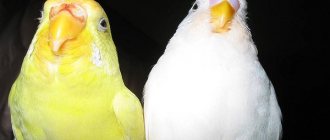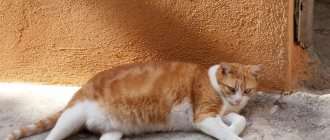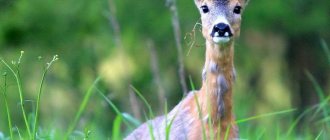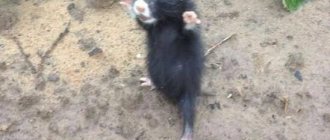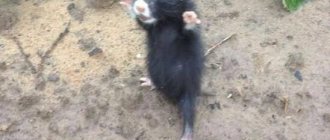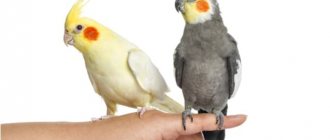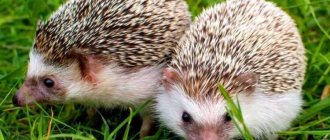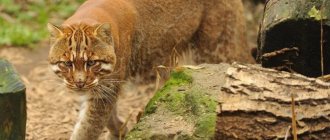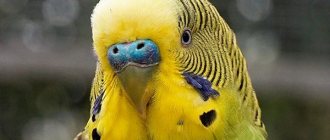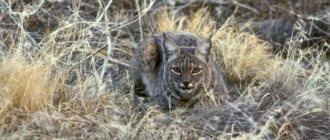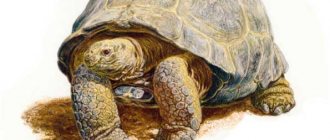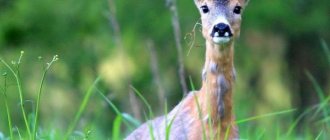Origin of the species and description
Photo: European roe deer
Capreolus Capreolus belongs to the order Artiodactyla, family Deer, subfamily Roe deer. The European roe deer is combined into one subfamily with American and true deer. There are two species of this subfamily on the territory of the Russian Federation: the European roe deer and the Siberian roe deer. The first is the smallest representative of the species.
The term itself comes from the Latin word capra - goat. Therefore, the second name for roe deer among the people is wild goat. Due to its wide habitat, the European roe deer has several subspecies forms living in different parts of Europe: a subspecies in Italy and a subspecies in southern Spain, as well as especially large roe deer in the Caucasus.
Video: European roe deer
The area of historical settlement of roe deer developed back in the Neogene period. Individuals close to the modern species filled the lands of modern western and central Europe, as well as some part of Asia. During the Quaternary period and the melting of glaciers, artiodactyls continued to explore new places and reached Scandinavia and the Russian Plain.
Until the nineteenth century, the habitats remained the same. Due to large fishing, the number of the species began to decline, and the range, accordingly, too, forming isolated settlements. In the 60s-80s of the twentieth century, due to the tightening of protective measures, the number of deer began to grow again.
Hunting from ambush
Roe deer hunting from ambush is most often organized on paths made by roe deer in a winter snow-covered forest. It is neither possible nor necessary to build a tower in such a place; it is quite possible to get by with a small ambush.
Roe deer ambush hunting begins with searching for ambush sites. Such a place should be visited by roe deer on an ongoing basis. The ambush is made on the path along which the roe deer move from feeding areas to bedding areas.
Hunting for roe deer from ambush is much more difficult than hunting from a tower. The hunter has to wait for the roe deer for a long time and most often in subzero temperatures.
The hideout can be arranged either on a tree or on the ground. The shelter should fit perfectly into the surrounding area and not stand out against its background. It is best if it is made from locally available materials.
The main difficulty of hunting roe deer from ambush is that roe deer, thanks to their well-developed sense of smell, are able to smell the scent of a hunter in ambush from a great distance.
Appearance and features
Photo: Animal European roe deer
Roe deer is a small deer, the weight of a mature individual (male) reaches 32 kg, height up to 127 cm, at the withers up to 82 cm (depending on body length, occupies 3/5). Like many animal species, females are smaller than males. They are distinguished by a short body, the back of which is higher than the front. The ears are elongated and pointed.
The tail is small, up to 3 cm long, often not visible from under the fur. Under the tail there is a caudal disc or “mirror”, it is light, often white. A light spot helps roe deer in times of danger, serving as a kind of alarm signal for the rest of the herd.
The color of the coat depends on the time of year. In winter, darker shades range from gray to brown-brown. In summer, the color lightens to light red and yellowish-cream. The tonality of the body and head is no different. The coloring of sexually mature individuals is the same and does not differ by gender.
The hooves are black, sharp at the end in front. Each leg has two pairs of hooves (in accordance with the name of the order). The hooves of female representatives of the species are equipped with special glands. In mid-summer, they begin to secrete a special secretion, which informs the male about the beginning of the rut.
Only males have horns. They reach 30 cm in length, a span of up to 15 cm, close together at the base, normally curved in the shape of a lyre, branched. Horns appear in cubs by the fourth month of birth, and are fully developed by three years. Females do not have horns.
Every winter (between October and December) deer shed their antlers. They will grow again only in the spring (until the end of May). At this time, males rub them against trees and bushes. In this way, they mark their territory and, at the same time, clean off any remaining skin from the horns.
Some individuals have an abnormal horn structure. They are not branched, similar to the horns of a goat, each horn goes straight up. Such males pose a danger to other members of the species. When competing for territory, such a horn can pierce an opponent and cause fatal damage.
European roe deer , roe deer , wild goat or simply roe deer (lat. Capreólus capreólus) is an artiodactyl animal of the deer family. The roe deer lives throughout Europe and is also found in the Caucasus and the Middle East. The diet of a wild goat consists of a huge variety of plant foods. Average sizes of European roe deer: males - body length 1.08-1.3 m, height at withers 66-91 cm, body weight 22-37 kg. Females are approximately 15-16% . It is the object of commercial and sport hunting. Life expectancy is 12-16 years.
Content:
1. Appearance and physique
2. Habits and lifestyle
3. Reproduction
4. Natural enemies of roe deer in Crimea
5. Roe deer hunting in Crimea
Appearance and physique
The size and weight of roe deer are subject, in addition to significant age, gender and seasonal differences, to great geographical variability. The largest representatives of this species live in Sweden, east of the Dnieper and the mountains of the North Caucasus. The European roe deer also has a related species - the Siberian roe deer .
The main difference between these species is the size; the Siberian roe deer is much larger than the European one. The European roe deer has an appearance typical of a cervid. The body is not long, as mentioned above, only 108-130 cm. The tail is small from 2 to 3.5 cm and it is barely noticeable due to the fur of the near-tail “mirror”. The white “mirror” appears in animals in September, after molting, and lasts until the summer molting. The animal's limbs are long and thin, and the hind legs are slightly longer than the front ones, because of this the wild goat's back is tilted forward and the sacrum, it turns out, is slightly higher than the withers. Small hooves. The head is short, but rather wide and high around the eyes. It tapers from the ears to the nose. The ears are oval-shaped, pointed towards the top, they reach a length of up to 14 cm. The eyes are large and bulging, the pupils sit obliquely. The neck is long and thin.
On the legs there are interdigital (interungulate) and metatarsal (located on the outer side of the hind legs) glands, consisting of sebaceous and sweat glands, with their help a secret remains on the animal’s trail, telling its relatives all the necessary information about its owner - physiological condition, age, gender . In this way, roe deer can find members of their group, females during the rut, and rivals coveting someone else’s territory.
In males, the sebaceous and sweat glands on the head and neck, from the beginning of spring to the end of summer, significantly increase. With their help, males mark their territory, warning male rivals that the territory is occupied, and females that there is a male here who is ready to reproduce.
The main sign of sexual dimorphism is horns . An adult male grows small horns, 15-30 cm long and up to 10-15 cm wide. They are slightly curved and stand almost vertically, can have up to 3 branches, and are also covered with many tubercles (so-called “pearls”). . In the development of horns, sometimes anomalies occur; there are cases of uneven development of the left or right horn.
Horns begin to grow in males from 4 months of age, but they reach their final development only by the 3rd year of the animal’s life.
Like deer, roe deer shed their antlers every year. This occurs from October to December, then after about a month new ones begin to grow, growing to full size by April. In May, the antlers finally ossify and the males begin to actively rub them against the trees, clearing them of remnants of skin.
Females do not grow horns, however, there are very rare exceptions, and the horns grow small and ugly.
The roe deer has a very well developed sense of smell and hearing , vision is also quite well developed, however, it does not allow animals to clearly distinguish colors in the spectrum of medium and long waves (red, orange, yellow, green), but they perfectly distinguish colors in the range of short light waves (blue , violet, especially ultraviolet).
The color of adult animals is one-color, without sexual dimorphism; in the warm season it is light brown with a reddish tint, and in the cold season it is grayish-brown. The back part of the body, in the tail area (the so-called “mirror”), is painted white. Downwards the color of the body gradually becomes lighter. The abdomen is light. There is a light spot on the chin.
In small roe deer, so that they can camouflage among vegetation, the body is decorated with light sandy or grayish spots located in three longitudinal rows on each side of the body, while the overall color of the animal is reddish-yellow or sandy with a light brown tint. The abdomen and legs have a lighter shade.
A wild goat sheds twice a year. When switching to summer hair - in April-May, however, in elderly and sick animals the molting process is delayed, for example, in an emaciated, middle-aged male, the remnants of winter hair may linger until June-July. The transition to winter wool begins at the end of summer, around August, during this period the winter wool begins to grow, and the summer wool slowly falls out. The winter molting process continues until the beginning of October.
Habits, lifestyle and behavioral characteristics
Roe deer live in a variety of deciduous and mixed forests, as well as in forest-steppes. When choosing a place to live, they give preference to spacious and light forests with a sufficient number of bushes, while it is desirable that the forest is surrounded by fields and meadows, and also that there is a source of water nearby. Unlike the Siberian roe deer, they lead a sedentary lifestyle all year round, with virtually no seasonal migrations. Only in some areas of the range, where winters are very snowy, as well as in the mountains, are regular migrations of wild goats possible. As a rule, passing along the same route. For example, in the northwestern parts of Europe, field roe deer move into the forest for the winter. Roe deer can also carry out small temporary migrations caused by difficulties in obtaining food and movement (for example, a large thickness of snow cover, more than 20-30 cm).
Features of daily activity
Wild goats are most active in the morning and evening; as a rule, the peak of activity is associated with sunrise and sunset; at this time of day they search for food. 12 a day grazing , and the morning meal can take from 4 to 5 hours, and the evening meal can last up to 7 hours. In between feedings, goats find safe places and lie down to rest. 8 to 10 hours a day to chew food and rest However, the daily rhythm of these animals directly depends on many factors, such as the time of year, time of day, living conditions, and level of anxiety. All this leads to a possible shift in the daily activity of wild goats, for example, with the great proximity of cities and other settlements to places where animals live, and other anthropogenic pressure, roe deer are forced to lead an active lifestyle, only during twilight and night time.
In the spring and summer seasons, wild goats lead the most active lifestyle mainly at dusk and at night, and in the winter season - in the morning and in the first half of the day. Most likely, this shift in daily activity is caused by the activity of blood-sucking insects, which do not allow roe deer to sleep peacefully at night. It has been noticed that on hot days the amount of food consumed decreases. In winter, especially on cold days, roe deer, on the contrary, feed more often and longer, consuming more food. This is caused by the body’s need to compensate for energy costs to maintain the animal’s optimal body temperature. Consequently, in winter, wild goats are more voracious.
Weather also affects animal activity. Heavy and heavy rainfall forces roe deer to hide in shelters. Due to strong winds, wild goats prefer not to go out into open areas.
Movement
In a calm state, roe deer move at a walk or trot; in case of danger, they start running in leaps up to 6-7 meters long, periodically jumping 1.5-2 meters in height, reaching speeds of up to 60 km/h. This is faster than some predators, such as the wolf and lynx, can afford, but running at this speed does not last long for a wild goat. Maximum 400-450 meters in open space, in the forest much less - up to 100-120 meters. Having run such “serious” distances, they begin to confuse the trail, making circles to confuse their pursuers.
During the feeding process, they move slowly, in small steps, while often stopping and listening to the surrounding environment. It moves at a trot between feeding areas and while walking around its territory.
By the way, wild goats swim well, although not very fast.
Due to their physiological characteristics, size and body structure, it is very difficult for roe deer to move through deep snow (more than 40 cm), as well as on ice, because they glide on it.
Nutrition
So, what do roe deer eat? The diet consists of plant foods, however, it is quite diverse - a wild goat eats about 900 species of plants! Roe deer prefer young shoots that are low in fiber and high in nutrients and water. Roe deer try not to touch dry plants and hard grains, as well as plants containing toxic substances.
A short list of what roe deer eats
Trees and shrubs: poplar, willow, birch, linden, aspen, oak, beech, hornbeam, rowan, bird cherry, ash, buckthorn, honeysuckle, fireweed, knotweed, cereals.
Berries and fruits: blueberries, strawberries, rowan, rose hips, dogwood, lingonberries, hawthorn, sea buckthorn, apples, plums, pears, chestnuts, beech nuts and acorns.
Herbs: fireweed, knotweed, cereals, angelica, sorrel, burnet, columbine.
Aquatic plants: calligraphy, watchwort, calamus.
Other: mushrooms, ferns, lichens, mosses, mosses, wormwood, corn.
Sometimes they can consume poisonous plants such as belladonna, crow's eye, wolfberry, ranunculus and aconite.
They love to visit salt licks and also drink water rich in various mineral salts. This helps them replenish the lack of minerals.
But such a variety of food is available to them only in the warm season. In the cold season, wild goats don’t have much choice. Roe deer are forced to feed on dry grass, fallen leaves, shoots and buds of trees, acorns, and chestnuts. They can go out into the fields and eat the remains of agricultural crops: potatoes, corn, beets. When it gets really tight, they dig out moss and lichen from the snow, and if the snow is very deep, they start nibbling on coniferous plants. In a critical situation, they can eat bark from trees.
Seasonal behavior
In the summer, the majority of roe deer lead a solitary or family (female with offspring) lifestyle, and in the winter they live in family-groups or form herds for migration and migration.
The summer period for roe deer begins in March and ends at the end of August. During this time, goats are territorial and aggressive. Adult males, older than 2 years, occupy their territories from March to April. By the last month of pregnancy, females occupy the so-called “natal” areas, where they aggressively drive away other representatives of the species. Based on many years of observations of the species, territorial rigidity in roe deer is obvious, that is, having occupied a certain territory once, the animal will return to it from year to year.
The area of a male's possession ranges from 2 to 200 hectares and, as a rule, practically does not overlap with the territory of another male, however, there are cases at high population densities when the possessions intersect in feeding areas. As I wrote at the beginning of the article, males, with the help of sebaceous and sweat glands located on the head, neck and hooves, mark the boundaries of their possessions, making regular rounds of the territory. Male individuals try not to enter other people’s areas, but towards the end of the rut, they can visit their neighbors in search of “current” females. Territorial “showdowns” most often occur due to young “newly arrived” males who came from neighboring lands. Since goats constantly return to the same territories, they have time to get to know their neighbors - other representatives of the species, of course, as a result, familiar male neighbors rarely arrange conflicts with each other over territory, usually limiting themselves to only a demonstration of force. The male allows females and young of the year to live on his territory. As soon as the males turn one year old, the host male aggressively drives them away. As a result, young males begin to wander in search of their territory. But, very rarely, it happens that young and “inexperienced” are forced to migrate across foreign territories throughout the summer, sometimes becoming companions of adult males, accompanying them until the start of the rut. Migration in search of their own areas is not observed in older females; usually, they settle in areas adjacent to the maternal ones.
As a rule, there can be at least 1-2 “birth” sites on the territory of males. The area of these areas before calving (birth) is small, from 1 to 7 hectares, but as soon as the roe deer grow up, it increases to 100-180 hectares. Here the female remains until the end of the breeding season and mates with the male or males in whose possession her area is located. As mentioned above, the female aggressively defends her territory, driving away even her grown offspring, allowing only the male to mate during the rut.
It turns out that developed territoriality in roe deer helps the species survive by weakening food competition between pregnant and lactating females.
In the fall, around October, roe deer begin to unite into groups (at first, family groups - females and young roe deer are joined by young animals, including one-year-old males, driven out in search of their territory). Adult males shed their antlers and stop marking their territory.
Later, at the beginning of winter, other goats, including adult males, join family groups, although some males prefer to live separately, even in winter. Groups and herds are formed with a matriarchal order - the leader is an adult female mother. Animals stay together until March-April, then the herds and groups break up.
A notable feature is that field roe deer live in large herds, more than 40-60 animals, while forest roe deer form small groups, usually 10-15 animals. As mentioned earlier, wild goats practically do not make seasonal migrations and winter in the same place where they flew, occupying an area of more than 300-400 hectares.
Social behavior and communication
Communication signals can be divided into three types, in descending order: olfactory , acoustic and visual .
Olfactory signals include marking behavior. As I said at the beginning of the article, the roe deer has interdigital (interungulate) and metatarsal (located on the outer side of the hind legs) glands on its legs, consisting of sebaceous and sweat glands; with their help, a secret remains on the animal’s trail, telling its relatives all the necessary information about its owner - physiological state, age, gender. In this way, roe deer can find members of their group, females during the rut, and rivals coveting someone else’s territory. Males mark their territory with the help of sweat and sebaceous glands located on the head and neck, and also dig the ground with their hooves, leaving the secretion of the interhoof glands on it.
Acoustic signals play an important role in the communication of wild goats . They can be divided into two types: vocal and mechanical in origin.
The most popular sound made by both European and Siberian roe deer is barking . Both sexes make this sound when disturbed or frightened. In general, barking is a sound of alarm. A wild goat can bark while standing still and while running. Animals make this sound quite often at dawn, going to feed, and wild goats also like to bark at night. The barking of one individual can be responded to by others located at a distance of 1-1.5 km from it.
Male roe deer barking
Whistling - it is emitted by females during the rut, noticing the approach of a male, notifying him of their readiness to mate. This sound is also used when mothers interact with their cubs.
Whining , groaning , roaring - sounds expressing pain are made by wounded and caught roe deer.
Hissing or puffing - aggressive males and females make this sound. Males make these sounds in mating fights, when detecting an intruder in their territory, and while pursuing the current female.
Roe deer only squeak .
Significant in communication between wild goats are the sounds produced during certain body movements of the animal. For example, sounds that indicate anxiety, indecision and danger are stomping feet and loud jumping . Also, stomping feet and scratching the ground is interpreted by males as a demonstration of strength.
Visual signals are designed for visual perception. Used by animals when they are in a group or herd. This type of communication is often combined with acoustic and olfactory signals. The following postures are common among roe deer:
- indicative position (alarm position) - in this position the animal raises its head high, the eyes are wide open, the ears are alert and directed towards the “stimulus” of calmness, the body is tense, the fur on the “mirror” is loose, the nostrils intensively draw in air. If one of the goats takes this position, the rest stop grazing and huddle together, after which they also take an indicative position. This position is not necessarily static; roe deer can walk in an anxious position - the movement is slow, with the legs raised high, the neck stretched vertically upward;
- signal jumps - performed by an animal that has detected danger, performing jumps near other goats and even over them;
- warning about danger - a roe deer that has discovered danger runs next to another individual, while trying to touch it, but if the goat is lying down, it jumps over it;
- hiding - typical for roe deer, although adults sometimes use this position, it is characterized by the fact that the animals become motionless and freeze, or lie on the ground, pressing their heads with their necks extended to the ground.
- fright - sudden shying away from a real or false threat, while the approximate pose is not taken. It happens that, having run 25-100 meters, the goat takes a pose of anxiety and looks around;
- running after the leader - as soon as one roe deer runs with a loose “mirror”, the rest run after it, having run 100-200 meters, the group stops and takes an approximate pose, if the threat remains, then the run continues.
Reproduction
The roe deer's rut begins in the second half of summer, in July-August. However, due to the fact that a small proportion of adult and young females may come into estrus later or, for some reason, not be fertilized in the summer, an “extra” rut may take place in late autumn.
By the way, the roe deer is the only representative of ungulates that has a hidden (latent) period of pregnancy, but in the case of a late “additional” rut, there is no latent period. Let's look at this in more detail a little later.
It is noteworthy that the timing of the start of the rut tends to shift depending on the geographical area where the animals live, as well as on the altitude of the range above sea level.
By the beginning of the mating season, the males finally grow and ossify new horns and they begin to sort things out among themselves over territory and females. To protect against the horns of an opponent, the skin on the neck and front of the body thickens. However, the battles are fierce, often resulting in serious injuries and even death.
Once the rut begins, wild goats lose their caution and can run everywhere, but nevertheless, the territorial system is generally not disturbed. During the mating season, males become very agitated and feed very little. Moving around their possessions, they make loud barking sounds, often mark their territory and begin to actively search for and pursue females in heat. As was said earlier, the female’s territory is within the male’s possession; sometimes her territory can intersect with the possessions of two males, who will sort things out among themselves regarding who will chase this female.
Roe deer are mostly monogamous, but it is not uncommon for a female to be pursued by two or more males, with a male mating with two or three females per rut, and sometimes with five. It also happens that a female gives preference to a certain male and mates with him for several years in a row. In this case, strong pairs are not formed.
Males court females rudely and aggressively, especially young ones, and can even turn on their horns!
Before mating, lovers first run in large circles, gradually decreasing the radius. This continues until only the female remains in the race, which begins to cut small circles or figure eights around some obstacle, such as a bush or tree. Having rushed, the female stops and allows the male to cover her and perform his reproductive function.
Pregnancy in a roe deer lasts from 265 to 318 days! As I mentioned just above, pregnancy in coated females during the summer rut proceeds covertly (latently) for the first 4-5 months; during this period the embryo does not develop at all until January. But if a wild goat was fertilized in late autumn or December, then there is no latent period. From January, the rapid process of embryo development begins, and the female becomes cautious, tries to run and jump less. This pregnancy process helps the species to safely survive the hungry winter. The offspring are safely born in the midst of spring - early summer, just at the most favorable time in terms of coma and weather. By this time, or rather about a month before calving (birth), the female occupies her birth area.
One female gives birth to from 1 to 3 cubs, most often 2 . The weight of newborns varies from 1 to 1.7 kg. Roe deer are born covered with fur and sighted, but despite this, during the first months of life they are completely helpless. The cubs spend most of their time lying down, hiding in shelters. It is noteworthy that small roe deer from the same litter lie scattered, at a distance of 200-300 meters from each other. Given their spotty coloring and underdeveloped sebaceous and sweat glands, they are not easily detected by predators, and such distance between the cubs increases their chances of survival. The mother is nearby, but feeds and rests separately from them, visiting her offspring only to feed.
From the first days, the female often feeds her cubs with breast milk, which is rich in nutrients and fat. For the first two weeks, the mother feeds the newborns up to nine times a day. From the fifth day of life, roe deer begin to try plant foods, switching to them completely around the second month of life. The female stimulates the transition of calves from milk to plant foods, reducing the number of breastfeedings to 1-2 times a day.
By the beginning of the new rut, the young animals become independent and begin to wander separately from their mother, uniting with her only at the end of the mating season, until subsequent calving, or more precisely until her next arrival at the birth site. As mentioned earlier, the female does not allow anyone into her maternity area, including her grown offspring.
By autumn, roe deer grow significantly; they are able to gain up to 70% of the weight of an adult! The following begin to take part in the rut: females - from the 2nd year of life, although they become sexually mature already in the 1st year of life; males - from the 3rd or 4th year of life.
Natural enemies of roe deer in Crimea
Wolves . In the article about the wild boar, I wrote that the wolf population in Crimea has been growing since 2004, and in 2014, wolves gained a foothold in the Crimean Mountains. And on 02/09/2019 , while on a tax inspection in the “Red Stone” hunting grounds, I personally met a large wolf in the forest and was even able to film it on video. Foxes , boars , badgers , raccoon dogs , and martens also pose a serious danger to young animals .
Roe deer hunting in Crimea
On our peninsula, the European roe deer is found in mountainous forest areas; the largest population lives on the slopes of the Main Mountain Range of Crimea.
Roe deer are hunted in Crimea in several ways: collective driven (roundup) hunting, individual hunting from the approach or from a tower (ambush) .
Hunting dates:
— for all gender and age groups from 01.10 to 31.12 ;
— for adult males (individual hunting from an approach or from an ambush) from 20.05 to 20.06 and from 15.07 to 15.08 .
License cost * (private hunting grounds): from 10,500 to 18,000 rubles/individual, regardless of gender and body weight.
* excluding the cost of organizing and conducting the hunt.
You might be interested in:
Hunting on the “Red Stone” 12/23/2018
Hunting on the Red Stone in Crimea, p.
Rodnoe This time the hunt is planned at “Red Stone”, near the village of Rodnoe. I have heard only positive reviews from fellow hunters about these hunting grounds. Everyone praised this place. And, indeed, for good reason. The land is very good. A gathering of hunters was scheduled in the center of the village. Native near the store at 07:30 . The weather was not good, it was raining heavily and, apparently, it was not going to stop. As usual, having loaded everything we needed into the car with my father, we hit the road, visiting the TPP gas station to grab a mug of coffee.
Read more…
Pointing (gun) dogs. Brief description and characteristics of breeds
English setter (dog Gray)
Pointing (gun) dogs are dogs that are used for hunting, primarily, birds, as well as small fur-bearing game (rabbits and hares) with a gun. They are rightfully considered the elite of hunting dog breeding. They differ from other breeds of hunting dogs by their innate ability to stand in front of hidden game. They have an excellent sense of smell, perfect hearing and good eyesight. Dogs of these breeds are capable of fetching dead game from water and on land, following a wounded animal along the blood trail, and also making a stand on a hare. In general, excellent assistants for hunters who are keen on hunting field, steppe, forest and waterfowl game!
Read more…
“Cold” zeroing of the Aimpoint collimator
Cold zeroing of the collimator
What is “cold” zeroing and why is it needed? What is a laser cartridge? I will try to explain this process in detail, with the help of the Sightmark SM39002 cal laser cartridge. 7.62x39 . I will be shooting on the Aimpoint CompML2 4MOA , which is installed on my AKMS-MF1 carbine. There is nothing complicated about this event. But you shouldn’t count on an ideal result, limiting yourself to just “cold” shooting. But why?
Read more…
Share with friends!
Where does the European roe deer live?
Photo: European roe deer
Capreolus сapreolus lives on the lands of most of Europe, Russia (Caucasus), and the countries of the Middle East:
- Albania;
- Great Britain;
- Hungary;
- Bulgaria;
- Lithuania;
- Poland;
- Portugal;
- France;
- Montenegro;
- Sweden;
- Türkiye.
This type of deer chooses areas rich in tall grass, open forest, edges and outskirts of dense forest. Lives in deciduous and mixed forests, forest-steppes. In coniferous forests it can be found in the presence of deciduous undergrowth. Through forest belts it enters steppe zones. But it does not live in the zone of true steppes and semi-deserts.
Most often it is found at an altitude of 200-600 m above sea level, but sometimes it is also found in the mountains (alpine meadows). Roe deer can be found near human habitats on agricultural land, but only in places where there is a forest nearby. There you can take refuge in case of danger and relax.
The average density of animals in the habitat increases from north to south, increasing in the zone of deciduous forests. When choosing a location, roe deer are based on the availability and variety of food, as well as places where they can hide. This is especially true for open fields and areas located close to human settlements.
Hunting from the tower
Hunting for roe deer from a tower is most often carried out on specially constructed bait sites. Such bait sites are set up in organized hunting farms that have their own lands.
For the convenience of hunters, a hunting tower is installed next to the bait area. The structure of the tower must be strong, there must be comfortable seats inside the tower, and loopholes for shooting must be made in the walls of the tower. It is best if the hunting tower is made from locally available materials, then it will not be too conspicuous.
Roe deer get so used to the tower located near the feeding area that they are not afraid of it at all and perceive it as part of the surrounding landscape.
Sometimes towers for roe deer hunting are not installed at bait sites, but at the edge of the forest, at the edge of meadows or fields adjacent to the forest, at the edge. It is best if the tower is not installed at the very edge of the forest, in 2-3 rows of trees, then it stands out less against the background of the surrounding area.
The roe deer does not see or smell the hunter who is on the tower, so it can approach at close range; the hunter can only fire a well-aimed shot.
Hunting from a tower is most often carried out at dusk or at night; moonlit nights are very suitable for this. The rest of the time, the hunter has to use either an under-barrel flashlight or a night vision scope, but their use must be permitted by the hunting regulations of the region in which you are hunting.
Hunting from a tower is considered the easiest way to hunt roe deer. This method of hunting may be of interest to novice hunters, as well as those hunters who, due to age or health, cannot afford serious physical activity.
What does the European roe deer eat?
Photo: European roe deer in nature
During the day, the activity of artiodactyls varies. Periods of movement and finding food are followed by periods of chewing the food found and resting. The daily rhythm is tied to the movement of the sun. The greatest activity is observed in the morning and evening.
Many factors influence the behavior and rhythm of life of deer:
- living conditions;
- safety;
- proximity to places where people live;
- season;
- period of time during the day.
Roe deer are usually active at night and in the evening in summer, and in winter in the morning hours. But if the presence of a person nearby is noticeable, the animals will go out to feed at dusk and at night. Eating and chewing food occupy almost all of the waking time of artiodactyls (up to 16 hours per day).
On hot summer days, the amount of food eaten decreases, and on rainy and cold winter days, on the contrary, it increases. In the fall, the animal prepares for winter by gaining weight and stocking up on nutrients. The diet includes grass, mushrooms and berries, and acorns. In winter, dry leaves and branches of trees and shrubs.
Due to food shortages, during the colder months, roe deer come close to human homes and fields in search of crop residues left behind after harvesting. They rarely eat the whole plant itself; they usually bite it off from all sides. The liquid is obtained mainly from plant foods and snow cover. Sometimes they drink water from springs to obtain minerals.
Nutrition
The diet of roe deer includes grasses, shoots, buds, young leaves and fruits of bushes and trees. In winter, wild goats eat:
- hay;
- branches of aspen, willow, bird cherry, honeysuckle, linden, rowan;
- moss and lichens extracted from under the snow.
In exceptional cases, wild goats are ready to eat pine needles, but unlike other deer animals, they do not eat bark. Roe deer give particular preference to easily digestible, juicy food. In the summer they feast on lingonberries, blueberries, and strawberries.
Mushrooms are eaten in small quantities. They love to graze in meadows with forbs or in clover fields. They pick up acorns, chestnuts, fruits of wild fruit trees, and beech nuts from the ground.
In spring and summer, onions, lilies, burnet, umbelliferous, cereal and asteraceous crops are consumed. Sometimes they approach closed reservoirs in search of aquatic, succulent plants. They get rid of parasites with the help of wormwood.
They like to visit natural and artificial salt licks, which hunters use when tracking down their prey. Animals behave restlessly and warily while grazing, often looking around, sniffing and listening to every rustle.
Features of character and lifestyle
Photo: Animal European roe deer
The European roe deer is a herd animal, but its gregariousness is not always evident. By nature, roe deer prefer to be alone or in small groups. During the winter season, deer gather in groups and migrate to less snowy areas. In summer, migration is repeated to richer pastures, and then the herd disintegrates.
In Europe, roe deer are not subject to transitions, but vertical migrations take place in the mountains. In some regions of Russia, the migration distance reaches 200 km. In the warm season, individuals stay in small groups: females with cubs, males alone, sometimes in a group of up to three individuals.
In the spring, sexually mature males begin to fight for territory, and having expelled a competitor once does not mean mastering the territory forever. If the area is in favorable conditions, competitors' claims will continue. Therefore, males aggressively defend their territory, marking it with a special odorous secretion.
Females' territories are less separated, and they are not as inclined to defend the territory as males. At the end of autumn, after the end of the mating period, they gather in groups of up to 30 animals. During migrations, the herd size increases 3-4 times. At the end of the migration, the herd disintegrates; this happens in mid-spring, before the birth of young individuals.
Economic importance
The features of the economic importance of the European roe deer are considered in three particularly important areas. Firstly, roe deer are hunting animals that provide meat with good taste and nutritional characteristics, valuable skin and beautiful antlers. Secondly, the artiodactyl actively exterminates plants that cause significant harm to forest plantings and plantings.
This is interesting! Roe deer meat is a dietary product that is valued in some countries higher than the meat of wild deer, wild boar and hare.
Thirdly, roe deer are a generally recognized aesthetic element of nature, as well as a real decoration of meadows and forests. However, excessively proliferating European roe deer can cause quite serious damage to green spaces and forests.
Return to content
Social structure and reproduction
Photo: European roe deer calf
In mid-summer (July-August), the European roe deer begins the mating period (rut). The individual reaches sexual maturity in the third or fourth year of life, females sometimes earlier (in the second). During this period, males behave aggressively, mark territory, are very excited, and make “barking” sounds.
Frequent fights when defending territory and the female often end in injury to the opponent. Roe deer have a territorial structure - once they occupy one of the places, they return here next year. The area of the male individual includes several areas for childbirth; females fertilized by him come to it.
Deer are characterized by polygamy and often, having impregnated one female, the male leaves for another. During the rut, males show aggressiveness not only towards males, but also towards the opposite sex. These are the so-called mating games, when the male stimulates the female with his behavior.
The period of intrauterine development of the cubs lasts 9 months. However, it is divided into latent: after the crushing stage, the fertilized egg does not develop for 4.5 months; and development period (from December to May). Some females that do not mate in summer are fertilized in December. In such individuals there is no latent period and fetal development begins immediately.
Pregnancy lasts 5.5 months. One female bears 2 cubs per year, young individuals - 1, older ones can bear 3-4 cubs. Newborn roe deer are helpless, they lie hidden in the grass and if danger overtakes them, they will not move. They begin to follow the mother a week after birth. The female feeds the offspring with milk until 3 months of age.
Babies learn quickly and after they begin to walk, they slowly master new food - grass. At one month of age, half of their diet consists of plants. At birth, roe deer have a spotted color, which changes to adult coloration in early autumn.
Animals communicate with each other in different ways:
- smell: sebaceous and sweat glands, with the help of which males mark territory;
- sounds: males make specific sounds during the mating period, similar to barking. The squeak that cubs make when in danger;
- body movements. Certain positions that an animal takes in times of danger.
Scheduled pregnancy
Photo: Darek Delmanowicz
By summer, roe deer are ready for the rutting season. Mating usually occurs in July and August. When males look for a mate, they bark like dogs or howl like coyotes. Males will fight each other with their horns in an attempt to attract the attention of females. Having fought off his rivals, the male will pursue the female for some time until she is ready to mate. When the male overtakes the female, he will begin to circle around her.
Females can delay the union of the embryo and uterus, allowing her to give birth at a time of year that gives the young the best chance of successful survival. Typically fertilization occurs in January of the following year so that the young are born in May or June. Almost always two babies are born each time.
The average lifespan of a roe deer in the wild is 15 years. Sexual maturity occurs at 1.5 years.
Natural enemies of European roe deer
Photo: Male European roe deer
The main danger to roe deer in nature is predators. Mostly wolves, brown bears, stray dogs. Artiodactyls are most vulnerable in winter, especially during snowy periods. The crust collapses under the weight of the roe deer and it quickly gets tired, while the wolf is on the surface of the snow and quickly drives its prey.
Young individuals often become victims of foxes, lynxes, and martens. Being in a group, roe deer have a great chance of not being caught by predators. When one animal shows an alarm signal, the rest become wary and gather together. If one animal runs away, its caudal disc (“mirror”) becomes clearly visible, which is what other individuals are guided by.
When fleeing, roe deer are capable of jumping up to 7 m in length and 2 m in height at a speed of 60 km/h. The running of deer is not long, covering a distance of 400 m in an open place and 100 m in the forest, they begin to run in circles, confusing predators. In especially cold and snowy winters, animals do not find food and die of hunger.
Illegal hunting methods
Noose for a roe deer
Hunting for roe deer with a noose is an illegal method of hunting; people who use this method are poachers. A noose on a roe deer is not only illegal, but also contrary to the principles of hunting morals and ethics. A roe deer caught in a noose cannot in any way be considered an honestly obtained hunting trophy.
A roe deer caught in a noose, by the neck or by the leg, faces a painful death; often the animal suffers for more than a day before death. A noose placed on a roe deer can get caught not only by roe deer, but also by grazing livestock that wandered into the forest in search of fresh grass, hunters participating in a driven hunt, hunting dogs that are doomed to die in the noose if the owner does not have time to quickly reach them. help, other wild animals.
The taste of the meat of a roe deer caught in a noose is much worse than the meat of a roe deer obtained in the correct way. A roe deer strangled in a noose in winter goes rotten two hours after death. In summer, the meat of a roe deer strangled with a noose begins to deteriorate even faster.
The problem is further aggravated by the fact that poachers leave their snares in the forest and forget about them. Nooses left in the forest continue to waste animals. Animals killed in the noose become food for wolves, foxes and crows.
Hunting officials and game wardens are fighting poachers who install snares on roe deer, but the fight is complicated by the ease of installing snares and the difficulty of detecting the poacher.
Real, proper hunters use only legal and ethical methods of obtaining hunting trophies, and have all the necessary licenses and permits that give the right to such a hunt. Only a correctly obtained trophy can be the pride of a hunter.
Hunting for roe deer from under headlights
Hunting roe deer from under headlights is an illegal, poaching method of hunting. Poachers move around the hunting grounds in some vehicle equipped with a special search headlight, seeing the glowing eyes, illuminate the roe deer with a beam of the headlight and either immediately shoot, or if the roe deer tries to escape, they chase the roe deer in the vehicle. When being chased, a roe deer rarely leaves the headlights.
Chasing roe deer from under headlights scares away roe deer within a radius of ten kilometers or more from the hunting site.
Hunting for roe deer with a headlight involves moving around the land in a vehicle, as a result of which the surface of the ground is damaged and traces of the movement of animals are destroyed on it, which prevents proper hunters from tracking down roe deer.
With this method of hunting, wounded animals are often formed, which no one searches for and they die in vain.
Hunting under headlights carries severe penalties and is frowned upon by most hunters.
